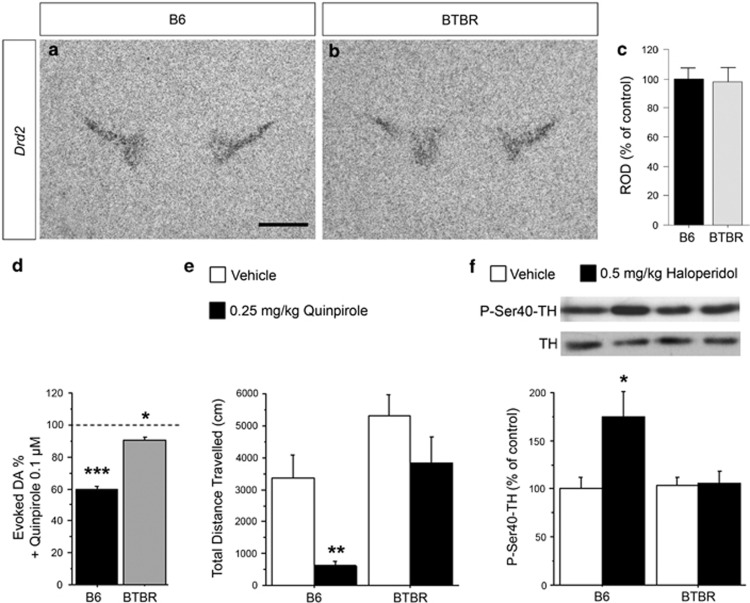Figure 4.
Impaired Drd2-mediated presynaptic responsivity and signalling in BTBR mice. Representative images of coronal section showing Drd2 mRNA expression at the level of the substantia nigra of B6 (a) and BTBR animals (b, scale bar, 1 mm). (c) Histogram of Drd2 mRNA levels in BTBR animals (n=7) obtained after densitometric quantification of autoradiograms expressed as percentage variation as compared with B6 control animals (n=4). (d) Normalized amperometric responses in the presence of the Drd2 agonist quinpirole (100 nM). The drug depressed DA overflow in both strains (B6, 60±3.6% of baseline, P<0.00001, BTBR 90.6±3.0% of baseline, P<0.013, paired t-test), although the effect in BTBR appeared greatly attenuated compared with the one observed in control B6 subjects (*P<0.05, ***P<0.01 vs baseline, paired t-test). (e) Motor activity induced by 0.25 mg kg−1 quinpirole in B6 (vehicle, n=7; quinpirole, n=7) and BTBR mice (vehicle, n=6; quinpirole, n=6). Locomotion is expressed as total distance travelled (in cm). (f) Striatal P-Ser40-TH protein levels in B6 and BTBR mice treated with 0.5 mg kg−1 haloperidol (B6, n=3; BTBR, n=4) or vehicle (B6, n=6; BTBR, n=5). The top panels in f show representative blots comparing the different strains and treatment groups. *P<0.05, **P<0.01, compared with vehicle-treated group within strain (one-way analysis of variance; f and e, respectively). All values are expressed as mean±s.e.m. DA, dopamine.

